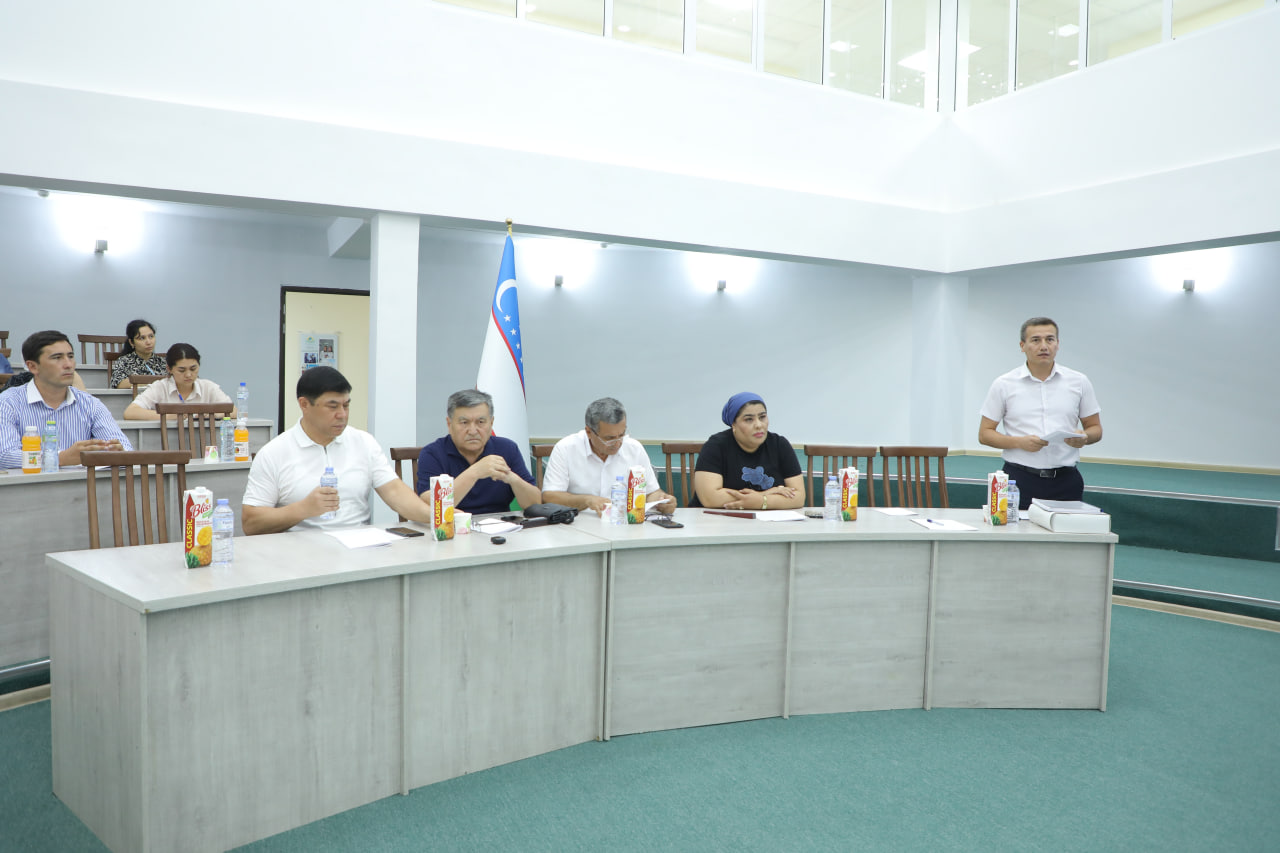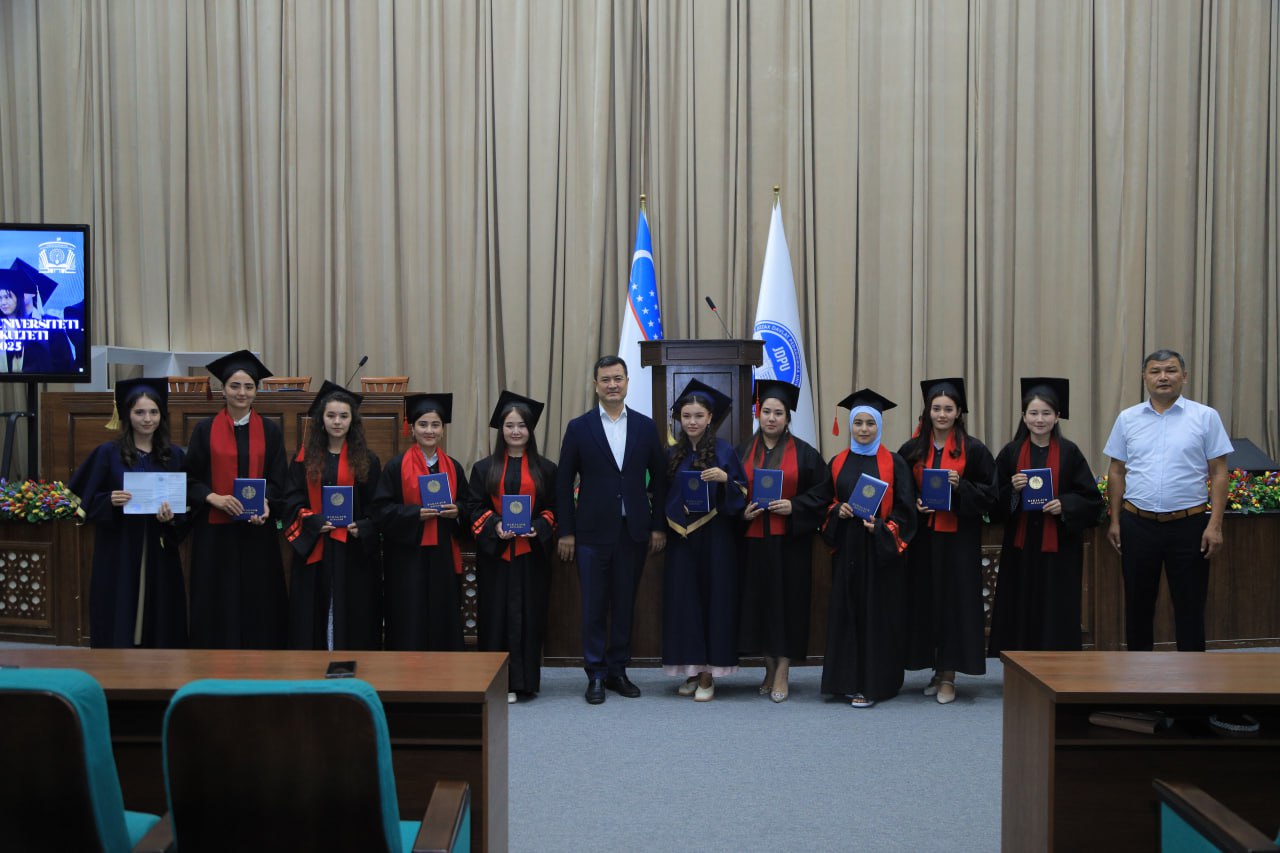Safarova Dildora Mamatovna
Senior teacher of Jizzakh state pedagogical university
Abstract: The article develops a theoretical model of the conditions for implementing level differentiation in primary school using rating assessment. Approaches have been proposed, the structure and stages of implementation of the rating assessment system have been identified, and pedagogical technologies for rating assessment of students’ knowledge in primary school have been substantiated. Numerous studies conducted on the problem of pedagogical assessment have shown a direct relationship between the nature of the teacher’s evaluative influence and the well-being, mood of children, the nature of their educational activities and its productivity.
Keywords: primary school, assessment, rating, productive, curriculum, knowledge control.
Annotatsiya: Maqolada reyting baholashdan foydalangan holda boshlang’ich maktabda darajalarni farqlashni amalga oshirish shartlarining nazariy modeli ishlab chiqilgan, yondashuvlar taklif etilib, reyting baholash tizimining tuzilishi va joriy etish bosqichlari belgilab berilgan, boshlang‘ich sinflarda o‘quvchilar bilimini reyting baholashning pedagogik texnologiyalari asoslab berilgan. Pedagogik baholash muammosi bo’yicha olib borilgan ko’plab tadqiqotlar o’qituvchining baholash ta’sirining tabiati bilan bolalarning farovonligi, kayfiyati, ularning o’quv faoliyatining tabiati va uning samaradorligi o’rtasidagi bevosita bog’liqlikni ko’rsatdi.
Kalit so’zlar: boshlang’ich maktab, baholash, reyting, samarali, o’quv dasturi, bilimlarni nazorat qilish.
Аннотация: В статье разработана теоретическая модель условий реализации уровневой дифференциации в начальной школе с применением рейтинговой оценки. Предложены подходы, выявить структуру, этапы реализации рейтинговой системы оценивания, обоснованы педагогические технологии рейтинговой оценки знаний учащихся в начальной школе. Многочисленные исследования, проведенные по проблеме педагогической оценки, показали прямую зависимость между характером оценочного воздействия учителя и самочувствием, настроением детей, характером их учебной деятельности и ее продуктивностью.
Ключевые слова: начальная школа, оценивание, рейтинг, продуктивность, учебная программа, контроль знаний.
INTRODUCTION
The problem of assessing student knowledge faces every teacher of a modern school. Currently, requirements for the quality of knowledge force us to look for fundamentally new ways to increase the efficiency of the education system through organizing the educational process in a way that would make the most extensive use of the creative potential of schoolchildren. [2, 37] This increase in learning efficiency is possible thanks to the introduction of rating assessment of knowledge and stimulation of independent work of students under the guidance of a teacher.
MATERIALS AND METHODS
Traditional “five-point” grading system
The five-point marking system has been the basis of the national educational system since the times of pre-revolutionary gymnasiums. It is worth noting some advantages of this system: marks are intuitive, easy to use, convenient for competitions, entrance exams, statistics, reporting, etc. But, as a rule, the mark does not play a stimulating, but only a confirmatory role. Often, for students, a grade turns into an end in itself, but for us it becomes a prism through which we evaluate the child’s own personality. “Los student”, “Good student”, “Excellent student”. The five-point system takes into account only the success of mastering a standard set of knowledge. [10, 55-56] While society formulates its social order to the education system. Businesses need qualified personnel capable of further continuous learning and the creation and implementation of innovations. The state needs not just an educated, but a patriotic, socially responsible population. Parents care about the success of their children in their future adult life (and the readiness of graduates to enter a prestigious university is of no small importance). [11, 15-21]
Disadvantages of the school assessment system (five-point)
- School grades are relative. They only determine which of the students has better knowledge and who has worse knowledge. They do not show the absolute level of knowledge.
Since school grades are assigned only as a result of the teacher’s thought processes, grades reflect only the result of a psychoanalytic comparison of the quality (measure) of students’ knowledge.
- School grades are random. Proof: grades reflect both the processes of presenting the knowledge of students, and the processes of their perception by the teacher and comparing them with the knowledge that he possesses.
- School grades are given so that, under ideal conditions, the number of A’s is equal to the number of B’s, C’s and other grades.
Proof: if all students have only “5” or only “2” grades, then the grade will no longer show who has better knowledge and who has worse. The assessment will cease to provide information and will become unnecessary. If it is used, it is only because it provides information about the comparative properties (knowledge) of the students.
- Ideal grading ratios always shift due to factors affecting the psychological comfort of teachers.
Proof: a school teacher is constantly influenced by the mutual jealousy of his students, their parents and other relatives.
- School grades do not take into account the absolute level of knowledge. Therefore, they are not comparable for different teams of teachers.
Proof: in one school the level of requirements is higher, its graduates with grades “4” can know subjects better than graduates of another school with grades “5”.
- School grades contain negligible information about the level of professional training.
Thus, the following disadvantages of the traditional assessment system can be formulated:
There is not always a standard for comparison, measurement and objective assessment of knowledge.
Lack of targeted work aimed at developing students’ abilities for self-control and self-esteem.
The control and evaluation mechanism remains entirely and exclusively in the hands of the teacher and is aimed at external control, accompanied by appropriate sanctions, and not at pedagogical support for students.
“Subjectivism” and “authoritarianism” of the control and evaluation system.
There is no individualization of learning: it is impossible to assess the real achievements of each individual child in comparison with his previous results.
Low information content of the mark. It is often impossible to judge the actual level of knowledge by the mark and, importantly, it is impossible to determine the vector of further efforts. [6]
The traumatic nature of the mark, which leads to a decrease in cognitive interest and psychological discomfort.
In this regard, the question arises of finding a fundamentally different approach to assessment that would contribute to the humanization of education, individualization of the educational process, increasing educational motivation and independence in learning.
Unlike the traditional one, rating assessment is aimed at differentiating the student’s level of knowledge. It allows you to notice even minor changes in the assimilation of educational material by each student, is aimed at stimulating his work throughout the entire academic year and provides the same approach to assessing the quality of education, i.e. objectivity of knowledge diagnostics.
RESULTS AND DISCUSSION
A graduate can be successful only if he has certain personal and behavioral skills, among which are competence, responsibility, the ability to make alternative choices and readiness for active creativity, professional and social activities that contribute to the progress of social development.
The rating makes it possible to obtain an objective and complete picture of educational results: the development of knowledge, skills and abilities in the subject, the formation of competencies and even the development of personal characteristics. The rating assessment system allows, in accordance with individual characteristics, the student to select possible options and forms of mastering the subject, helps the teacher expand communication, better navigate the interests and needs of students, know and take into account their individual characteristics.
Goals and objectives of introducing a rating system for assessing educational achievements:
- expand the competence of schoolchildren in the field of studying the discipline;
- develop in students independent thinking and the ability for self-education and self-development;
- create conditions that take into account the individual abilities and capabilities of students for the successful implementation of common, unified learning goals;
- increase the responsibility of schoolchildren for the results of their learning.
What is a rating?
The word “rating” comes from the English “to rate” (to evaluate) and “rating” (assessment, assessment). The rating is a “cumulative score” or “a score that takes into account previous history.” [3, 25]
The rating technology for assessing student learning outcomes in its most general form is based on taking into account the grades they accumulate in points for completing current work (laboratory assignments, quizzes, essays, tests, etc.) or regularly conducted control activities. Unlike the traditional method of assessment, rating technology involves sequential summation of a student’s grades in a given discipline over a certain period of time. The current rating score for a discipline consists of assessments of all types of academic work and knowledge control, without exception, including not only work according to the curriculum, but also such additional activities as participation in olympiads, competitions, presentations at scientific societies, work with lagging schoolchildren etc.
Advantages of the rating system
A number of schools have already developed experience in using the intermediate results rating system. As the analysis of this experience shows, this system has serious advantages:
- plays a high organizing role by increasing the positive motivation of students for educational work;
- forms students’ responsibility for the results of educational activities;
- establishes a unified approach to determining assessment standards, obtaining timely information about the rhythm of work of each student and the class as a whole. [5, 77]
A significant positive quality of this system can be considered a greater degree of objectivity and openness of the assessment process for schoolchildren, which eliminates conflict and stressful situations regarding the assessment among students. The rating system has incomparable flexibility; you can, for example, have it separately for each subject, or you can have it overall.
Advantages of the rating system
| “+” for student | “+” for teacher |
| the ability to manage your own time | rational planning of the educational process, organization of individual and creative work of students |
| conducting constant self-diagnosis and self-monitoring of educational achievements | stimulating effective learning for high school students |
| the ability to choose the order of completing educational tasks, independently planning their implementation | the ability to make timely adjustments to the organization of the educational process |
| comparing the level of your knowledge with the level of knowledge of other students | objective assessment of each student’s performance of each educational task |
| availability of appropriate rights (exemption from tests, exams, etc.) | the ability to accurately and objectively determine the final grade in a subject |
But on the other hand, the rating system requires strict planning of the material being studied, various types of control, systematic accounting in scoring, the organization of control that characterizes and evaluates the teacher’s activities, and mandatory milestone final testing.
Principles and properties of the rating system
The basic principles of the rating system can be formulated as follows:
the assessment does not depend on the nature of the interpersonal relationship between teacher and student;
assessment criteria are discussed in advance;
the student is free to choose the strategy of activity;
ignorance is not punished, the process of cognition is stimulated;
openness of the system – students must know the “rules of the game”: know the “cost” of any activity, know how to get points and how to lose them. To fulfill this property, the rating regulations must be available to students;
flexibility of the rating system (both teacher and student can adjust their activities at any time in the right direction);
block-modular structuring of the material being studied.
Types of rating
Types of ratings can be distinguished for different reasons.
By coverage of educational material:
Rating for a subject or a number of subjects;
Rating for the subject overall or separately for theoretical questions, separately for problem solving and for additional points;
The rating is temporary – for a certain period of time (quarter, half-year, year, etc.) or thematic – for individual sections (topics).
According to the content of control elements:
The starting rating is a determination of the initial level of knowledge;
The current rating includes an assessment of the student’s work in lessons;
The disciplinary rating includes current, intermediate, final control;
Creative rating is a student’s independent work outside of class time.
An extremely popular achievement rating (or success rating) is the success of each student, consisting of three components:
“academic rating” (current academic scores);
“Olympic rating” (points for participation in olympiads, scientific and practical conferences, competitions, competitions of any level);
“leadership rating” (participation in public activities and volunteer programs). All results are recorded in student record books.
The introduction of an achievement rating implies the construction of an individual educational program (often going beyond the curriculum), the identification and development of a suitable social role, and the design of an “effective future.”
Methodology for compiling rating scales.
An important problem is the methodologically correct compilation of the rating.
The main stages of compiling the rating.
Divide the material into structural and logical independent modules (or logical blocks). The module can be:
– a separate topic or section;
– independent cycle of laboratory work;
– individual homework;
– individual independent work of the student’s choice;
– sections allocated for independent study.
Determine standard scores for all tasks and tasks of the academic subject (or rules for scoring).
Establish a minimum number of points for each type of educational activity that a student must gain during training.
Draw up a set of rules and regulations on the basis of which the assessment will be carried out – rating regulations.
Organize recording of students’ progress and calculation of their ratings.
At the end of the quarter, give an overall grade for the work, which is the sum of rating marks for individual modules.
For a more objective assessment, you can also determine the levels of mastery of concepts:
- reproductive: the student must reproduce this concept in the form in which it was voiced in class by the teacher, written down in a textbook, notebook;
- Productive: in class, the student must perform standard exercises based on this concept and answer questions (that is, understand);
- partially search – the student, based on the concept, not only performs standard exercises, but also transfers this concept to new conditions to solve non-standard problems;
- creative: a student, through research, a thought or mathematical experiment, discovers new knowledge (concepts).
When using the rating system, you should adhere to some rules:
Student self-assessment precedes teacher assessment. The discrepancy between these two estimates is a matter of debate. The student himself evaluates his success, and after that the teacher evaluates the completion of the task. Thus, the positions of external and internal control are coordinated verbally or in writing. (The external expression of the level of self-control and self-esteem can be presented in the form of varying degrees of shaded figures that correspond to verbal assessments: “I know how and can do this. I understood the lesson material and coped with all the tasks” – a completely shaded figure; “I don’t understand everything, there are mistakes in my work, I need help” – a half-shaded figure; “I didn’t understand the material, I couldn’t cope with the assignments, I urgently need help!” – the figure is not shaded).
CONCLUSION
For assessment (and self-assessment), only those tasks are selected where there is an objective unambiguous criterion, and those where the subjectivity of the assessment is inevitable are not selected. Such qualities of the child as pace of work, peculiarities of attention, memory, perception, etc. are not subject to assessment in lessons. The work performed is assessed, not the performer.
Assessment of initiative and creativity in all areas of school life (and not only school) should become as significant as assessment of the skill side of learning. An assessment of a child’s creative manifestations must be formalized and presented to teachers, students of different classes and parents. For this purpose, rotating exhibitions, publications, stands for demonstrating achievements, etc. are used.
REFERENCES:
[1]. V.I. Borodulin, Gorkin A.P. et al. − Illustrated encyclopedic dictionary // M.: Scientific publishing house: Great Russian Encyclopedia, 1998.
[2]. I. Dashkevich I. In-school control // Public education.−1992.−№5−6.−P.37-42.
[3]. Yu.G.Kapustina—Rating system of education through the eyes of students. //Didact.−1998.−No. 6.−P.25−26.
[4]. A. Kushnir − Is there a place for threes and fives in developmental education? // Public education. − 1997. − No. 8. − P. 49−55.
[5]. P. Lerner.−Exam based on rating // Public education.−1993.−No. 4.−P.77 – 80.
[6]. N.A. Nefedova, K. B. Tralkova. −Methodological writing – criteria for analyzing and evaluating the examination work of an 11th grade graduate in literature in the form of presentation with a creative task //Education at school.−2001. No. 4.−P. 19.
[7]. Regulatory and methodological materials of the Ministry of Defense of the Russian Federation //Didact.−2000. No.5.−P.12 – 13.
[8]. Regulatory and methodological materials of the Ministry of Defense of the Russian Federation // Didact.-1998. No. 6.−N.Z.
[9]. S.I.Ozhegov, N.Yu. Shvedova.−Explanatory dictionary of the Russian language. Moscow: publishing house “AZ”, −1995. pp. 477, 664.
[10]. V. Simonov. − Public education // 1997. No. 6.−P. 55 – 56.
[11]. N. Sinyagina.−Diagnostics, development, control //Public education. 1994. No.2.−P.15-21.
[12]. A.V. Khutorskoy. − Free development as a space of education // School technologies. 1998. No. 5.−P. 110 – 111.





